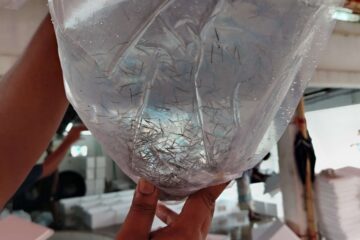Harnessing Technology to Revolutionise Aquaculture
Aquaculture, the practice of cultivating aquatic organisms in controlled environments, is rapidly evolving with the integration of advanced technologies. As the demand for seafood increases and natural fish stocks dwindle, technology plays a crucial role in making aquaculture more efficient, sustainable, and productive.
The Role of Technology in Aquaculture
- Automated Feeding Systems Automated feeding systems use sensors and timers to dispense the right amount of feed at the optimal times. This not only ensures that fish receive proper nutrition but also reduces feed waste, which can lead to water pollution.
- Water Quality Monitoring Maintaining optimal water conditions is vital for the health of aquaculture species. Advanced sensors and monitoring systems can continuously track parameters like temperature, pH, dissolved oxygen, and ammonia levels. Real-time data allows for immediate adjustments, ensuring a stable and healthy environment.
- Recirculating Aquaculture Systems (RAS) RAS technology recycles water within the aquaculture system, significantly reducing water usage and minimizing environmental impact. These systems filter and treat the water, removing waste products and replenishing essential nutrients, creating a sustainable and closed-loop system.
- Genetic Selection and Breeding Technology enables selective breeding programs to enhance desirable traits such as growth rate, disease resistance, and feed conversion efficiency. Genetic mapping and biotechnology tools allow for precise and accelerated breeding processes, leading to more robust and productive stock.
- Drones and Remote Sensing Drones equipped with cameras and sensors can monitor large aquaculture farms from the air, providing valuable data on fish behavior, pond conditions, and potential issues like algal blooms. This aerial perspective aids in efficient farm management and early problem detection.
- Artificial Intelligence (AI) and Machine Learning AI and machine learning algorithms can analyze vast amounts of data collected from aquaculture operations. These technologies can predict growth rates, optimize feeding schedules, detect diseases early, and enhance overall farm management, leading to higher yields and reduced costs.
Benefits of Technological Integration
- Increased Efficiency: Automation and real-time monitoring reduce labor costs and improve resource management.
- Sustainability: Technologies like RAS and precision feeding minimize environmental impact and promote sustainable practices.
- Enhanced Productivity: Genetic improvements and optimized farming conditions lead to faster growth rates and higher production volumes.
- Improved Health and Welfare: Continuous monitoring and advanced diagnostics ensure the well-being of aquatic species, reducing mortality rates and improving overall health.
Challenges and Future Directions
While technology offers immense potential, challenges such as high initial costs, the need for technical expertise, and the integration of disparate systems remain. However, ongoing research and development, along with collaborative efforts between industry and technology providers, are addressing these hurdles.
In the future, we can expect even more innovative solutions such as blockchain for traceability, IoT devices for interconnected farm management, and sustainable alternative feeds. As these technologies continue to evolve, they will play an increasingly vital role in shaping a sustainable and prosperous aquaculture industry.


